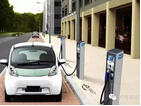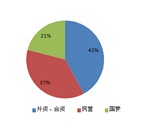In recent years, the development of new energy vehicles has entered a rapid development channel. Especially in the trend of the overall slowdown in sales of the Chinese automobile market last year, the sales volume of new energy vehicles is still showing a sharp increase. The sales of new energy vehicles reached 800,000 in the whole year. Car. According to the data of China Automobile Association, the sales volume of new energy vehicles in China in the first half of this year has reached 412,000, an increase of 112%. At this growth rate, it is expected that the cumulative sales volume for the whole year will reach the first million units.
According to industry predictions, the number of traditional fuel vehicles will reach a peak by 2025. After that, the total volume will gradually decline, and new energy vehicles will gradually increase in volume. By 2030, new energy vehicles will be expected to exceed traditional vehicles
In fact, under the current global energy crisis and environmental protection pressure, with the transformation of traditional fuel into electric drive, the car power revolution has intensified, and the car material revolution, the automotive material revolution, is also a wave of momentum, and the automotive power revolution. Walk side by side. Different from traditional fuel vehicles, new energy vehicles use batteries as power to drive the car. Due to the weight of the power battery and the cruising range of the power battery, under the strict energy conservation and consumption reduction regulations, the body weight becomes a new energy vehicle. The first consideration is the issue.

“Magnesium or magnesium alloys will also be used in some structural parts that are not visible, such as steering supports, seat frames, etc.; they will be used in high-end vehicles in terms of engine covers, transmission casings, and body structures. The body will also increase the application of carbon fiber materials, which will first be applied to the body, covering reinforcements and rigid structural parts (such as truss beams)," Cao Du said.
Although there are data showing that in 2025, the proportion of steel used in automobiles will still reach more than 50%, but according to industry predictions, non-metals will increase in automotive materials in the future. FAW Gaogong Tian Hongfu also pointed out at the China Automotive Lightweight Industry Summit Forum that in addition to non-ferrous metals to replace some steel, the remaining part is the focus of non-metal. On the one hand, however, there are a lot of good lightweight technologies that are not fast and not popular, and most of them are due to cost. Even the best technology will affect the whole product if the cost is too high.
At present, there are many types of materials for power battery casings of new energy vehicles, including steel, iron, aluminum alloy and other non-metallic materials such as plastic and carbon fiber. Tian Hongfu pointed out that this piece is not fully mature now, but in the future, this part and charging piles and sockets are important parts of new energy vehicles, and the amount will be very large. Non-metallic materials have very good application advantages in this field. .
















 RCCN WeChat QrCode
RCCN WeChat QrCode Mobile WebSite
Mobile WebSite







